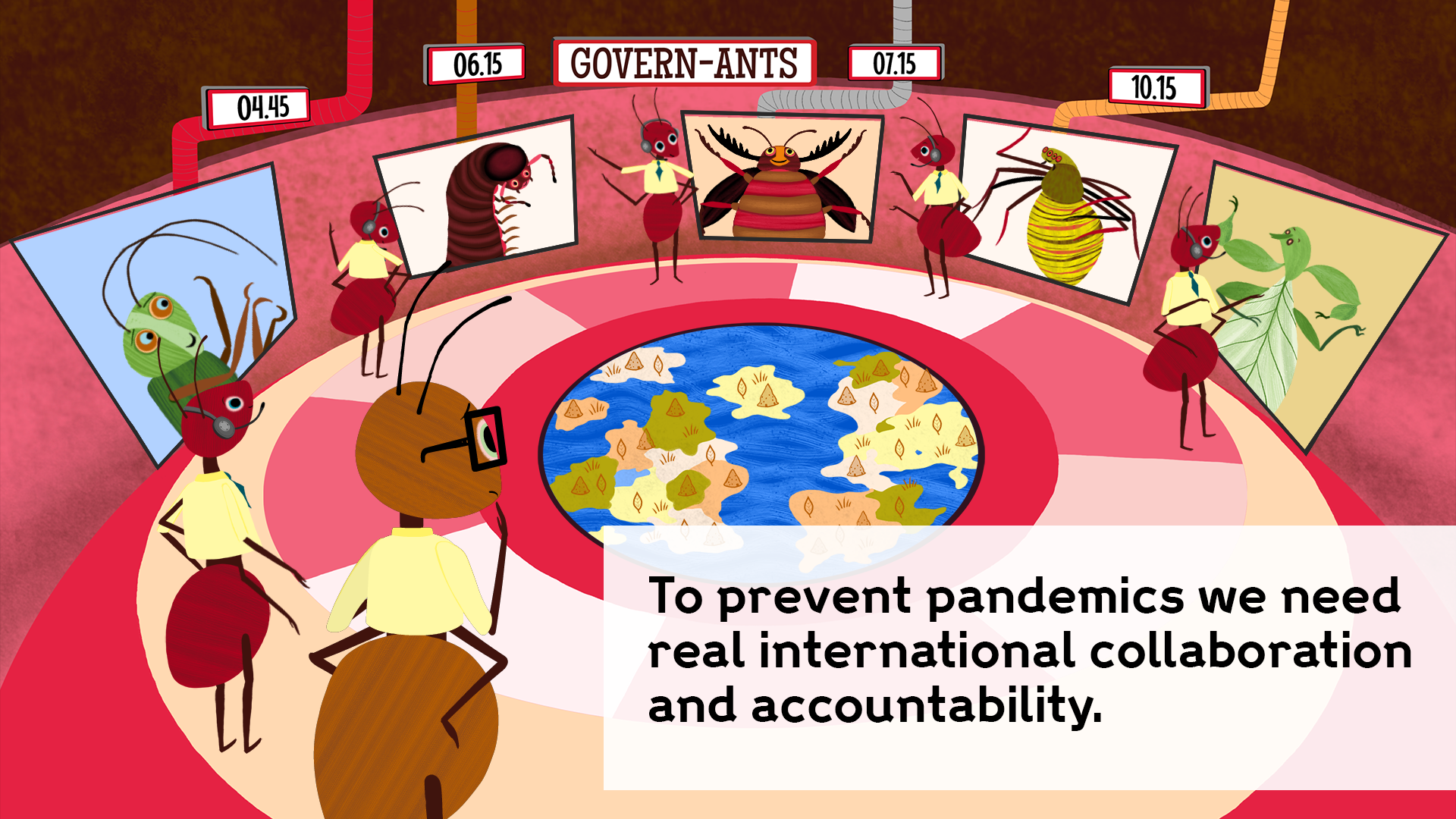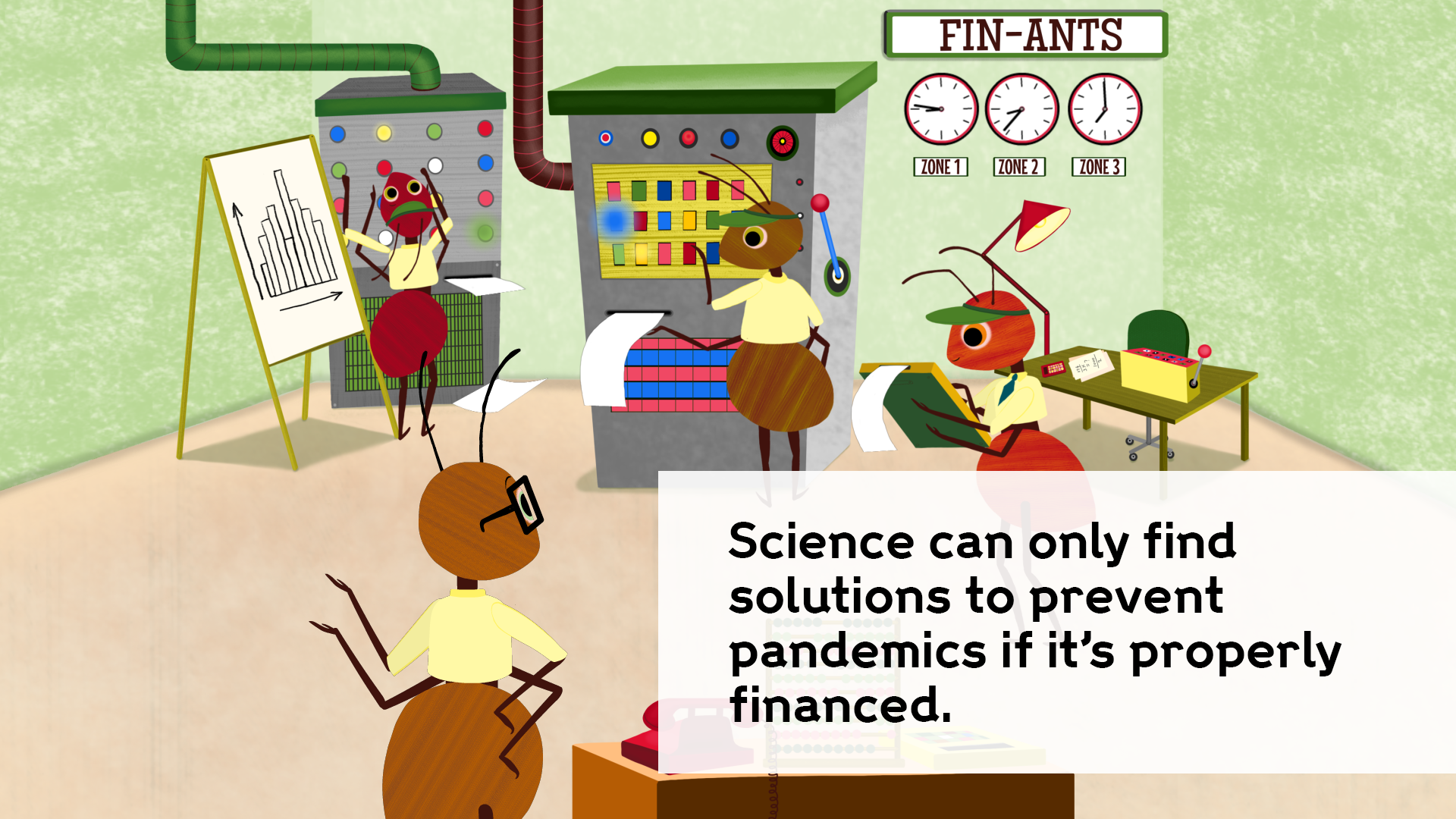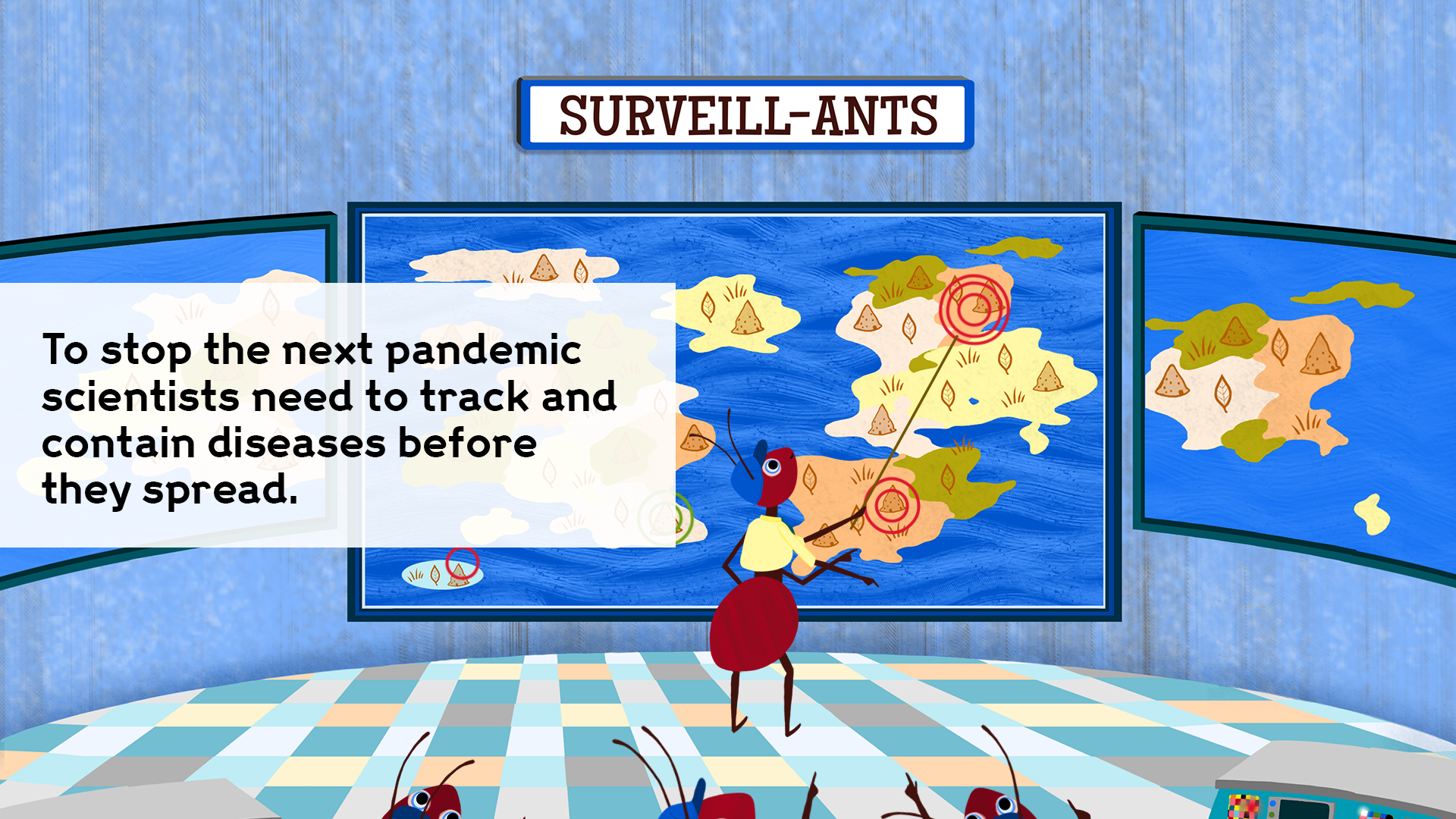The world could have been much better prepared for Covid-19. So now we must ask: How well prepared are we going to be for the next pandemic?


The risk of another pandemic is high.
Our 21st century way of life increases this risk. Climate change, intensive farming and international travel, enable diseases to spread across the world faster than ever before.
As the Omicron variant spreads across the world at rapid speed, we are reminded yet again of the need for global networks that work together to identify and stop infectious disease.
The task facing world leaders now, even as they continue to deal with Covid-19, is to work together to ensure we are better prepared for the next outbreak.
There are two paths world leaders can take.
It’s a little like Aesop’s fable, The Ant and the Grasshopper – a story about the virtues of planning for the future. Like the ants in the fable, we could learn from Covid-19, stock-up, prepare and keep watch as a global community.
Or policymakers could breathe a sigh of relief, hope nothing like this happens again, and carry on much as before.
This is a story about the importance of being prepared. And who better to tell that tale than the Ants?
This is Ava. She comes from a long line of deceased ants. Year after year, disease had taken its toll on these communities. Each time they learned a little more about defending themselves, but the only thing they knew for certain was that another disease would come, which is why Eva took a job at the Arthropod Communities Health Organisation.
Ava wanted to take all the knowledge they'd gathered about diseases to create one big master plan to be the next one.
First things first, they needed some money. Ava explained that to research and produce the tools they needed to beat the next disease, funding was required. Lots of it.
Unfortunately, not everyone agreed. Some of her colleagues wanted the money for more local projects. But without funding there could be no research. And without research, there'd be no vaccines to protect vulnerable insects.
Ava had to push on. She needed to get Surveillance onboard. Fast! Ava told them it was essential to be able to track and contain diseases before they spread.
Some colleagues disagreed with this use of the Surveillance team. Ava explained that if they couldn't see where the outbreaks were happening, they couldn't stop them spreading.
It was time to move on.
Making vaccines around the world was crucial to protect everyone, everywhere. Again, sadly, not everyone agreed. Without giving insects everywhere the tools to make their own vaccines, many would be left vulnerable. Next stop, Planning HQ.
This is where all the insect leaders met at the Arthropod Communities Health Organisation. Ava started to speak. As she finished outlining her master plan, there was silence... then a cacophony of noise. Perhaps they'd finally agreed on a plan to protect everyone, everywhere.
Governments cannot make the same mistakes again.
They must do better.
And they must work together to strengthen global health systems to better prevent, prepare for and respond to the next pandemic.
Here’s how:
The problem
The world has dealt with outbreaks before.
Nipah (1999); SARS (2003); H5N1 (2004); H1N1 (2009); MERS (2011); Ebola (2014); Zika (2015) were all warning signs that a new infectious disease could appear and become a global pandemic.
Yet the structures needed to coordinate a global response to Covid-19 were not in place.
Pandemics cross borders. They need countries to work together. Throughout the current pandemic, leaders have struggled to tackle Covid-19 collectively.
This has created a vacuum of global leadership and strategy.


The solution
Global problems need global solutions.
While action is needed at local, national and regional levels to improve preparedness, there are a set of activities best coordinated globally.
There is strong consensus in three recent reports – The Independent Panel for Pandemic Preparedness and Response (IPPPR), G20 High Level Independent Panel on Financing the Global Commons for Pandemic Preparedness and Response (HLIP), and the Pan-European Commission on Health and Sustainable Development (Pan-European Commission) – that new structures are needed to bring together political leaders to end this pandemic and prevent the next
Therefore, a new Global Health Threats Council or Board should work with existing groups like the World Health Organization, the Global Fund, Gavi, CEPI, and not duplicate their work or activities.
There must also be a strong role for low- and middle-income country governments in any new structures, to bring experience and expertise of tackling epidemics.
The world needs urgent progress, not paralysis. And these changes must go hand-in-hand with more funding.
The problem
Global solutions need collective investment.
Since the Covid-19 pandemic started, we have seen increased investment in research, manufacturing and distribution of Covid-19 tests, treatments and vaccines.
Paradoxically, we’ve not seen the same increase in Research and Development (R&D) for diseases that are at risk of becoming the next pandemic. Continuing to fight the Covid-19 pandemic doesn’t lower the chances of another health threat.
The health and economic benefit of investing in these tools now and for future pandemic diseases has never been clearer. But major gaps in the world’s capabilities persist, such as in globally networked surveillance and research to prevent and detect emerging or escalating infectious diseases. The mechanisms to mobilise global funding for these crucial tools are limited, leaving every country in our interconnected world vulnerable.


The solution
We need governments to build collective financing mechanisms to transform the world’s ability to prepare for and respond to pandemic threats.
Governments’ contributions to new financing mechanisms, such as the US government established fund for Global Health Security and pandemic preparedness, must be in proportion to their ability to pay. And this money must be in addition to overseas development assistance, so that it doesn’t compete with other critical health and development priorities.
The problem
Covid-19 has shown us the blind spots in the world’s ability to detect, track and respond to emerging viruses.
The world did not have the right infrastructure in place to respond to Covid-19 and so it could not act at speed to contain the initial outbreak.
To prevent pandemics, we need to invest in three areas: surveillance, manufacturing and co-ordinated research and development.


The solution
Surveillance
Finding new pathogens quickly is critical to containing them.
There are too many global ‘dark spots’ where new viruses cannot be identified – but building locally-owned, internationally-connected genomic surveillance networks will ensure we can spot potential dangers before they become a global problem. This network must work with local communities and be used between outbreaks to tackle other infectious diseases and urgent global threats.
With sustainable, long-term investment this network can inform powerful regional and international responses to all infectious diseases rapidly and efficiently.
Manufacturing
Throughout Covid-19, we have seen what happens when vaccines and treatments are produced in a small number of countries. High-income countries buy-up the global supply, leaving the virus to thrive elsewhere.
Access to these tools is a question of both supply and delivery.
We need to increase regional manufacturing capacity. This will ensure more people will have access to treatments and vaccines.
While efforts to diversify manufacturing capacity could take several months to have a positive impact on Covid-19 vaccine supply, increasing regional manufacturing capacity will have long term benefits for future pandemics globally, while ensuring local needs are met.
Research and Development (R&D)
At the start of the Covid-19 pandemic, very little was known about the virus, even less how to diagnose, treat and prevent it. Thankfully, scientists could build on existing research on other coronaviruses, such as vaccines for MERS and new mRNA technology. As a result, multiple vaccines were developed, approved and manufactured in record time.
Next time, the world may not be so lucky.
Consider our response to Ebola, where failures to continue key areas of research between outbreaks led to a delay in the development of usable diagnostics, treatments and vaccines when the next outbreak hit.
There are still no WHO-approved diagnostic tests for six out of the WHO’s 10 priority diseases.
We must be prepared for all plausible scenarios – and this means more investment in R&D.
We need a system that leads and supports equitable and collaborative R&D programmes to deliver a full range of countermeasures, such as diagnostics, therapeutics, and vaccines, available to respond to a pandemic.
It would need to work with industry as well as global health organisations and have equitable access to its products at its heart.
And will only be successful if leaders commit to transparency and openness in sharing the information they collect with the world.
Special thanks to Alice Jamieson, Senior Policy Adviser, for contributing to this article.
The world could have been much better prepared for Covid-19. So now we must ask: How well prepared are we going to be for the next pandemic?